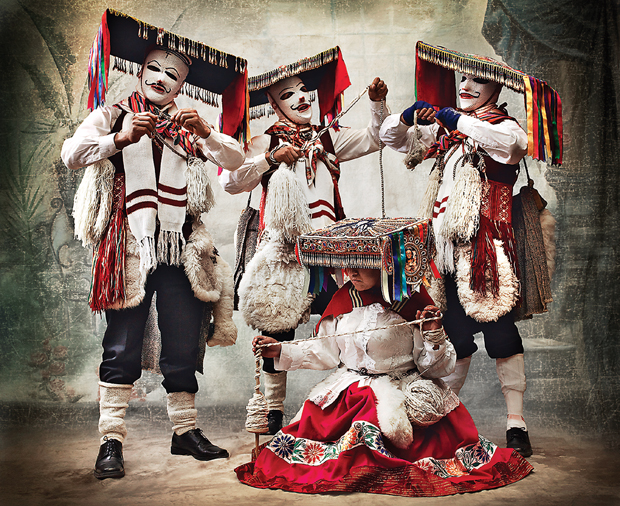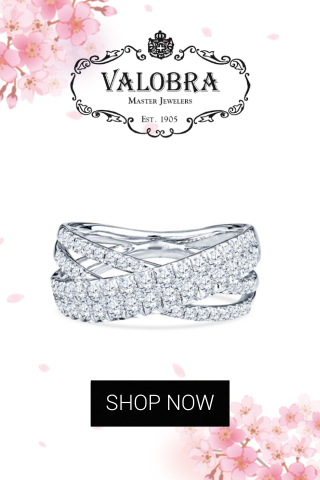
He’s Peruvian, he resides in London, he’s never visited Texas, and he’s coming to Dallas. Internationally famed fashion photographer Mario Testino is respected by every glossy magazine from Vogue to Vanity Fair; sought after by designers such as Burberry, Roberto Cavalli and Versace; beloved by models Kate Moss, Gisele Bündchen and Miranda Kerr; and admired by celebrities and royals alike. This month, in the heart of the Dallas Design District, Testino showcases his exhibition “Alta Moda by Mario Testino” at the Dallas Contemporary. Testino will transform the latter’s white walls into a dramatic backdrop of black, pink and red to exhibit more than 30 oversized portraits of traditional Peruvian costume, each saturated in color and heritage. Irving, TX, darling and IMG model Erin Wasson attributes the success for her modeling career to Testino, her mentor and friend. Who better, then, to chat up Mr. Testino?
ERIN WASSON: YOU WERE BORN IN LIMA, AND THE ELDEST OF SIX CHILDREN, YOU WANTED TO BE A PRIEST AS A CHILD. WHY?
MARIO TESTINO: I grew up in a very Catholic community. We went to Catholic school and church on Sunday as well as observed religious holidays and saints’ days. It was just part of our life, and I guess when you are young, you look around you for inspiration. I was quite inspired by the performance of being in church. It’s obviously not theater, but there was something about it — that everyone is looking towards the priest whom conducts the service,that he has to wear special robes, that there are prayers and hymns, beautiful paintings, candlelight … I’ve often thought, in a dream world, if I were not a photographer, I would be a singer, so maybe performance is what it’s all about. In a way, I have to perform as a photographer. I have to project myself into the picture through my connection with the sitter. Also, I felt good helping out. I was an acolyte/altar boy helping the priest. When we were 15, we volunteered in one of the shantytowns by teaching the children, and, for me, it felt so natural. I liked doing it. The priests brought this reality to me and gave me that opportunity, and it’s something I have carried with me through life.
EW: YOU MOVED TO LONDON TO STUDY PHOTOS. WHY, WHEN, WHERE AND WHAT DID YOU EXPERIENCE DURING THIS TIME?
MT: I moved to London in the late 1970s, but it was a bit later that I discovered photography. I tried many things. There was a time when I was a waiter trying to survive, but I was no good, as I would clear a table one plate at a time and wash my hands after each plate. I studied photography with a photographer of the theater, so there again performance was what taught me. I made money by taking pictures of new models for their books. London in the late 1970s was so different from what I was used to in Peru. It was the birth of punk and huge social change — so different from Lima. Many of the people I met at that time are still great friends and collaborators now, like Lucinda Chambers of British Vogue, Georgina Godley and Hamish Bowles, to name a few.
EW: YOU DYED YOUR HAIR PINK TO GET ATTENTION. HOW DID IT LOOK?
MT: I guess it was the time; I tried so many different looks. My hair is quite thick and curly, so when I grew it long it looked a bit like an afro. I would also wear flowery trousers and any number of different things. I just tried different styles, and the times were so experimental.
EW: 2002 NATIONAL PORTRAIT GALLERY: 10 YEARS’ HIGHEST ATTENDANCE OF ANY EXHIBITION. DESCRIBE THIS SHOW AND WHY YOU THINK IT WAS SO SUCCESSFUL.
Sometimes museums have to balance giving to the audience what they will want and what they don’t know they will like.
EW: IN 2011, THE ROYAL PHOTOGRAPHIC SOCIETY AWARDED YOU AN HONORARY FELLOWSHIP. TELL ME MORE.MT: It was a risk for the NPG in London to do this show. I read recently that Charles Saumarez Smith, then the director, said what criticism he got for it. I guess people didn’t expect it from an institution such as the NPG. Many of the works were contemporary, from magazines like Vogue and Vanity Fair, fashion pictures and celebrity portraits. As well as this, we did the prints very large and made the walls green and blue. It was just so different from what people were used to from the NPG, and in a way, I guess it shocked. But it was the highest attended show for 10 years and still is their highest attended photography exhibition. Maybe it was timing, but maybe people were ready for a change and wanted to see something different. Different is always attractive. The exhibition also covered all the people that rule today’s media landscape. Celebrities of all sorts, in fashion, cinema, society, art. They were all together. Maybe it’s what people wanted, but they didn’t know until they saw it. Sometimes museums have to balance giving to the audience what they will want and what they don’t know they will like.
MT: It was an honor to be awarded this fellowship from the Royal Photographer’s Society, an organization that is devoted to the craft of photography. It’s always humbling when your peers recognize you, especially as so many important photographers have received the fellowship.
EW: TELL US ABOUT MATE [MUSEO MARIO TESTINO]— PROMOTING CULTURE TO BOTH LOCAL AND INTERNATIONAL AUDIENCES THROUGH ARTISTIC PROGRAMS.
MT: MATE is something very close to my heart. It exists for so many reasons. I wanted to give back to my homecountry. Peru has given me so much support and inspiration, and the best way I felt I could give back would be through culture. The first time I took my work to Peru, in 2010, I exhibited at the MALI (Museum of Art, Lima). I had such incredible support from the public, with people queuing around the block to see the show. Seeing this, I realized I wanted my work to live in Peru, almost like giving my work back to Peru. I also had a desire to have a platform for cultural exchange, somewhere that other artists could show their work and somewhere I could bring work from international artists and then take Peruvian art overseas. All this is part of our mission with MATE. As well as permanently showing my own work, we have a dynamic program of temporary exhibitions.
EW: “ALTA MODA BY MARIO TESTINO.” DESCRIBE YOUR PROCESS CURATING A SHOW SUCH AS THIS. WHAT MESSAGE DO YOU HOPE TO CONVEY?
MT: “Alta Moda” is a personal body of work for me. I discovered this archive of costumes from Cusco, one of the highest regions in Peru, in 2007, and I decided to start documenting them. I had no real end goal in mind when I began, but as I amassed more pictures, it became obvious it could be an exhibition. I decided to first show it at MATE in 2013, and since then, I have taken it to Paris, New York and now Dallas, as well as having posters of the images displayed in the streets of the city of Cusco. I guess this is an example of taking something that is Peruvian and taking it overseas, showing other parts of the world our rich culture and heritage.
EW: WHY SHOW IN DALLAS? HOW DID IT COME TOGETHER?
MT: The Dallas Contemporary is a really dynamic institution, and the reception to art in Dallas is fantastic. It’s very much part of the culture, so it’s a great opportunity to exhibit there. They are ahead of other institutions in the world. To me, it’s a very important one.
EW: TALK ABOUT HOW WE MET FOR THE FIRST TIME.
MT: When I first saw you, I was blown away. You had a personal style parallel to your beauty that was completely captivating. When I proposed you to Anna Wintour for one of our first shoots for Vogue, she accepted, which was a very rare thing! You did not let me down, and it was not just a make-believe look but something that came from the heart.
EW: RECOUNT THE FIRST TIME WE WORKED TOGETHER. HOW WAS THE EXPERIENCE?
MT: Oh, it was great! I did [the shoot] with Carine Roitfeld, who I worked with a lot at the time. We did a great story, and if I remember correctly, it ran in the magazine just as we had done it, which was surprising. We carried on photographing you through the years. You were always a Testino girl through and though, with tons of style and personality.
EW: SINCE YOU HAVE 499,000 INSTAGRAM FOLLOWERS, WHAT ARE YOUR FEELINGS ABOUT THE DIGITAL AGE AND SOCIAL MEDIA?
MT: Now 524,000 [at the time of interview]! I love it. I view it like my own magazine in a way, but above that, it’s the connection and conversation you can have with your followers. It’s immediate and exciting.
EW: PRINT VS. DIGITAL PHOTOGRAPHY. DO YOU FEEL ANY INTIMACY LOST?
MT: It all depends on how you use both; digital doesn’t have to be a loss of intimacy. I think there will always be a place to see and admire printed work, too. I think digital is just a way of photographing — nothing really changed with photography, as the whole exercise is essentially the same. One thing that is a crucial change, though, is that one is no longer restricted by how a particular film can perform, so everything is still possible. That can be a trouble, too, but not for me, as I like the freedom.
EW: HOW HAS THE BUSINESS OF PHOTOGRAPHY CHANGED IN RECENT YEARS?
MT: The pace is faster. I remember when we used to send the film to the labs to be processed and wait for it to come back. It would take a week. Now I can take a picture and almost straight away, I can be editing it. Or posting it to Instagram!
EW: WHAT ELSE DO YOU HOPE TO ACCOMPLISH IN YOUR LIFETIME?
MT: I would just like to keep working hard and enjoying life. I have a desire to help people understand that everything is possible. Restrictions are just in your mind, and we have to let it go.































_md.jpeg)


